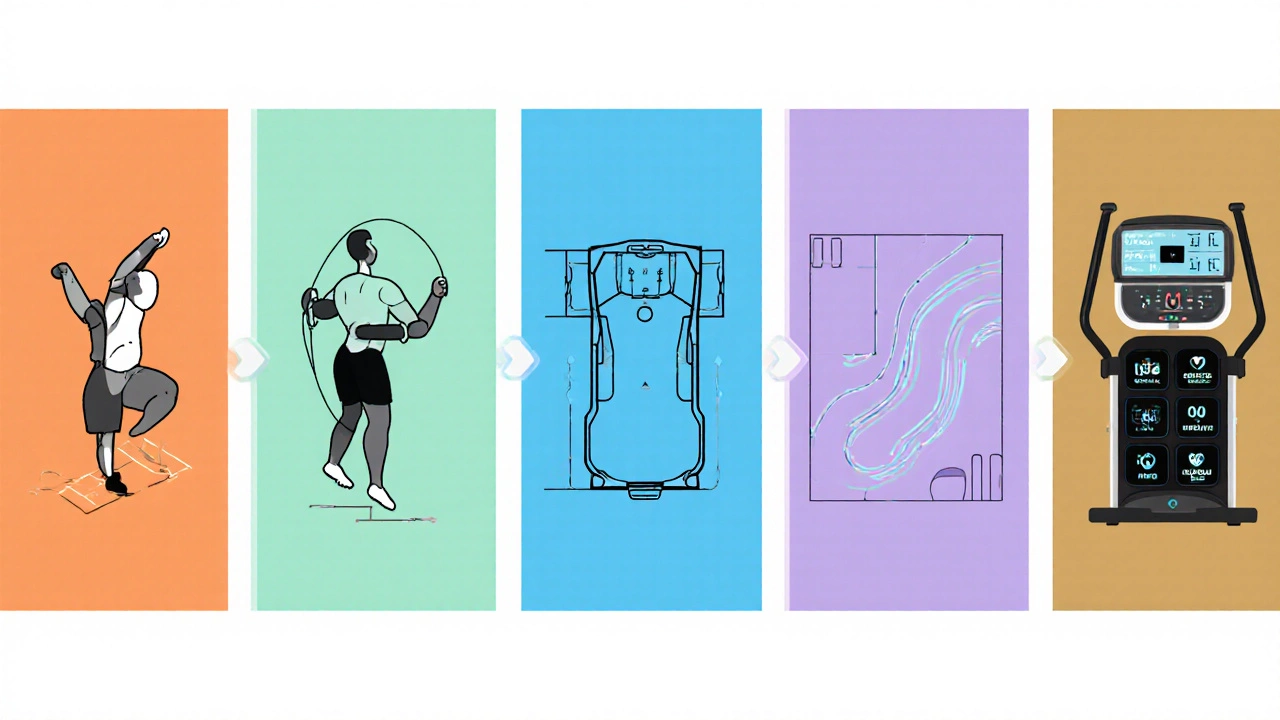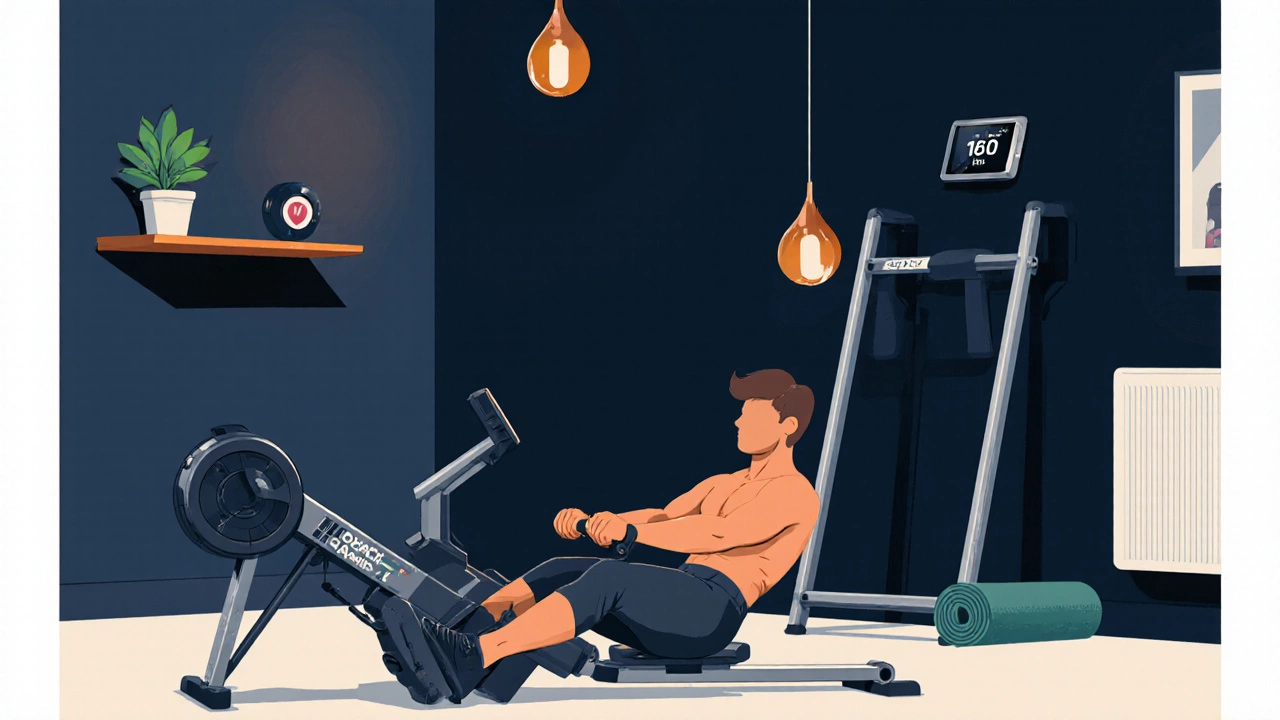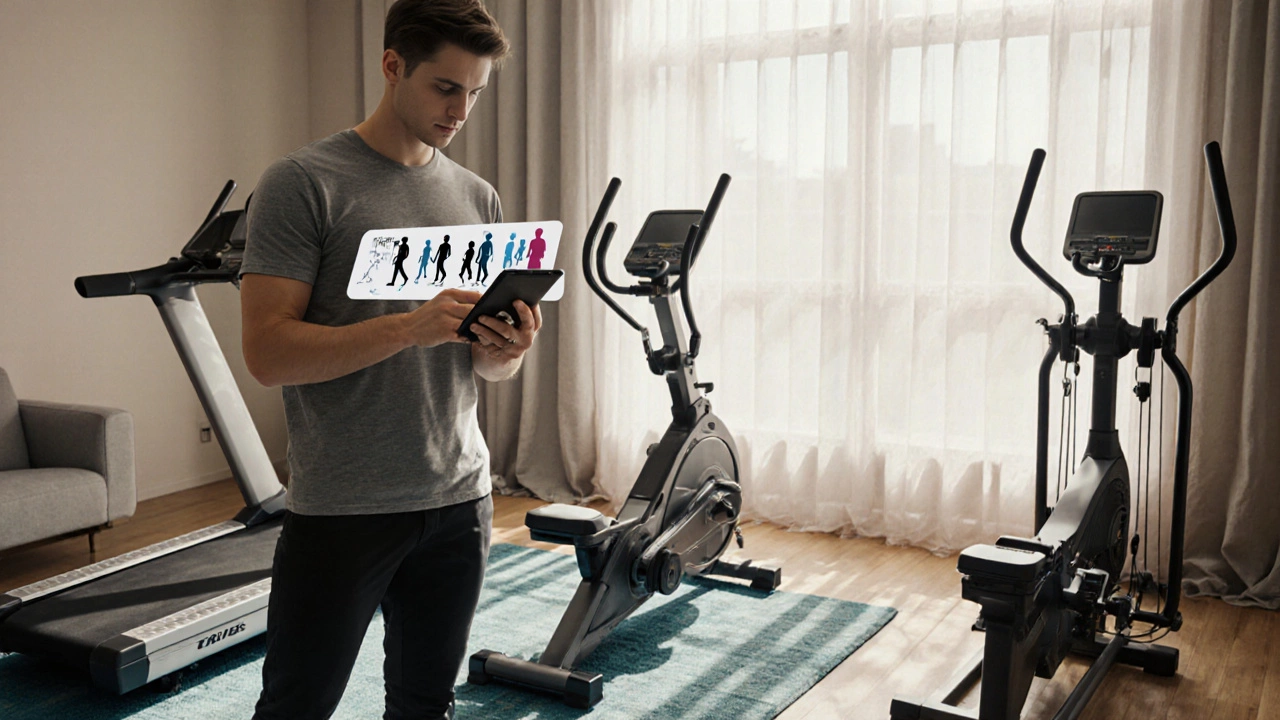Full-Body Toning Machine Calculator
Find the perfect toning machine for your space and budget. Enter your room dimensions and budget range to see which machines meet your criteria.
When you’re hunting for the best exercise machine for toning your whole body, the market can feel like a maze of promises and hype. One minute you’re looking at a sleek elliptical, the next a compact rowing rig that claims to sculpt arms, legs, and core in a single session. This guide cuts through the noise, shows you exactly what to look for, and lines up the top machines that actually deliver a full‑body tone without needing a full‑size gym.
What does full‑body toning really mean?
Before you click “add to cart,” it helps to pin down what “toning” actually involves. Toning isn’t about bulking up; it’s about building lean muscle, improving muscle endurance, and burning enough calories to shed a layer of fat that hides definition. In practice, that translates to:
- Resistance that challenges the major muscle groups (legs, glutes, back, chest, shoulders, core).
- Continuous movement that keeps heart rate in the moderate‑to‑high zone (150‑180 bpm) for cardio benefits.
- Low‑impact options that protect joints while still providing enough load for muscle activation.
When a machine hits all three points, you’re on the right track for a truly toned physique.
Key criteria for picking a toning machine
Not every piece of equipment can claim to hit every muscle. Use these criteria as a quick filter before you dive into product specs.
- Multi‑muscle engagement: Look for designs that involve pulling, pushing, and leg work in a single motion.
- Adjustable resistance range: A good toning machine should let you start light (5‑10 kg) and climb up to 50 kg or more as you progress.
- Footprint & portability: Measure the floor space you have and consider foldable or wheel‑mounted models if you need to store it.
- Low joint impact: Elliptical‑style paths, rowing strokes, or fluid resistance mechanisms protect knees and hips.
- Built‑in programming: Interval presets, calorie counters, and simple heart‑rate integration make it easier to stay in the optimal zone.
Top 5 machines for whole‑body toning
Below are the five machines that consistently hit the criteria above, backed by user reviews and performance data up to October 2025.
| Machine | Primary Motion | Resistance Type | Space Required (sq ft) | Price (USD) | Best For |
|---|---|---|---|---|---|
| Total Body Trainer - a hybrid cable‑pulley system with squat rack. | Push‑pull, squat, row | Weight stack (up to 150 kg) | 30 × 20 | $1,199 | All‑round strength + cardio |
| Rowing Machine | Full‑body row | Magnetic/air resistance (0‑500 W) | 9 × 6 | $899 | Cardio‑heavy with strong back/leg focus |
| Elliptical Trainer | Elliptical stride | Magnetic (0‑20 lb) | 14 × 7 | $1,049 | Low‑impact cardio + leg muscle tone |
| Bowflex Home Gym | Cable‑based pulleys | Spiral spring (up to 145 kg) | 28 × 18 | $1,399 | Space‑saving strength with many exercise options |
| Indoor Cycling Bike | Pedal‑drive | Magnetic (0‑200 W) | 12 × 6 | $799 | High‑intensity cardio + lower‑body endurance |
Each entry hits a different sweet spot. If you want a single piece that covers squats, rows, presses, and even core twists, the Total Body Trainer stands out. For pure cardio with an upper‑body pull, the Rowing Machine gives you a full‑body sweat session in under 20 minutes. Ellipticals and cycling bikes excel at protecting joints while still torching calories, making them ideal for beginners or anyone with knee concerns. Bowflex’s cable system is a versatile alternative for those who need a broad exercise library but have limited floor area.

How to match a machine to your space and budget
Even the best machine can become a nightmare if it doesn’t fit your living room or wallet. Follow these steps before you sign the purchase order:
- Measure the clearance: Add at least 2 ft of space behind the machine for safe entry and exit.
- Check ceiling height: Some rowing rigs and total‑body trainers require 9‑10 ft clearance for full stroke.
- Weight capacity: If multiple people will share the equipment, pick a model rated for at least 250 lb.
- Budget tier:
- Under $800 - Basic rowing or cycling units.
- $800‑$1,200 - Mid‑range ellipticals and Bowflex‑style cable gyms.
- Above $1,200 - Premium total‑body trainers with integrated racks and digital consoles.
- Future‑proofing: Choose machines with upgradeable resistance modules or interchangeable accessories so you can keep challenging yourself.
Maintenance tips to keep your machine performing
A well‑maintained machine lasts longer and feels smoother, which means more consistent toning sessions.
- Wipe down after each workout: Sweat can corrode metal parts and degrade rubber belts.
- Lubricate moving parts quarterly: Use a silicone‑based spray on rowing chains, elliptical glides, and cable pulleys.
- Tighten bolts monthly: Vibration can loosen connections, especially on budget models.
- Inspect resistance mechanisms: For magnetic models, check for rattling; for spring‑based systems, watch for loss of tension.
- Store in a dry area: Humidity can cause rust on steel frames, especially in coastal cities like Durban.

Quick checklist before you buy
- Does the machine engage at least four major muscle groups per cycle?
- Is the resistance range suitable for beginner to advanced levels?
- Will it fit in the designated space with clearance for movement?
- Does it offer built‑in programs that keep heart rate in the 150‑180 bpm zone?
- Are the warranty terms at least two years for frame and one year for electronics?
- Is the price aligned with your budget tier and does it include essential accessories (e.g., heart‑rate strap, mat)?
Frequently Asked Questions
Can a single machine replace a full‑body dumbbell set?
A total‑body trainer or a cable‑based home gym can mimic most dumbbell moves (press, curl, row, squat) and adds the benefit of adjustable resistance without needing multiple plates. However, free‑weight enthusiasts may still miss the proprioceptive feel of kettlebells or barbells for certain lifts.
How many minutes per session are enough for visible toning?
Aim for 30‑45 minutes, three to five times a week, keeping heart rate in the moderate‑to‑high zone. Consistency beats occasional marathon sessions when the goal is lean muscle definition.
Is low impact really better for toning?
Low‑impact machines (elliptical, rowing, total‑body trainer) protect joints while still providing enough resistance to trigger muscle growth. They’re especially good for beginners or anyone recovering from injury.
Do I need a separate heart‑rate monitor?
Many modern machines include built‑in heart‑rate sensors, but a chest‑strap or wrist monitor offers more accurate data, helping you stay within the optimal toning zone.
Which machine offers the best value for a small apartment?
A fold‑able rowing machine or a compact total‑body trainer with a small footprint provides full‑body work without sacrificing space. Look for models under 80 lb weight and with a storage rack.
